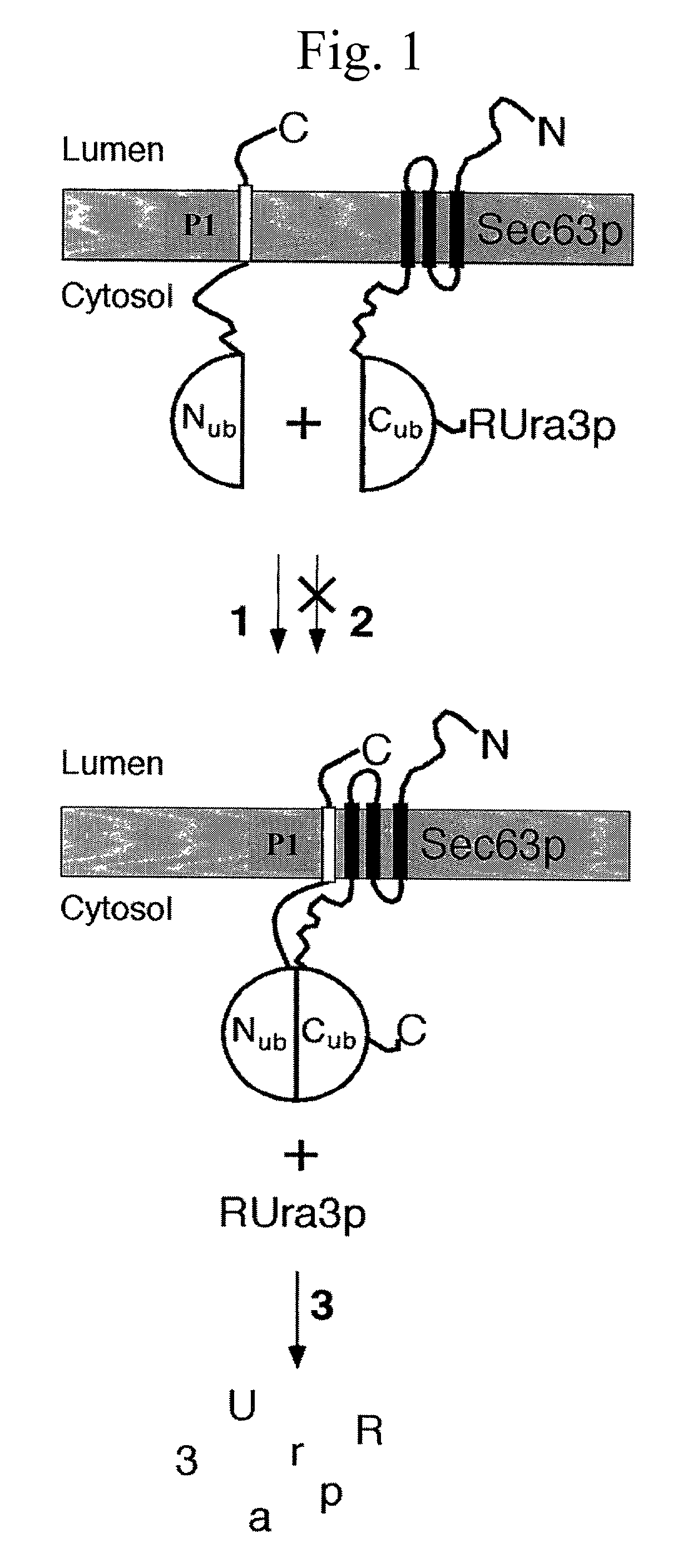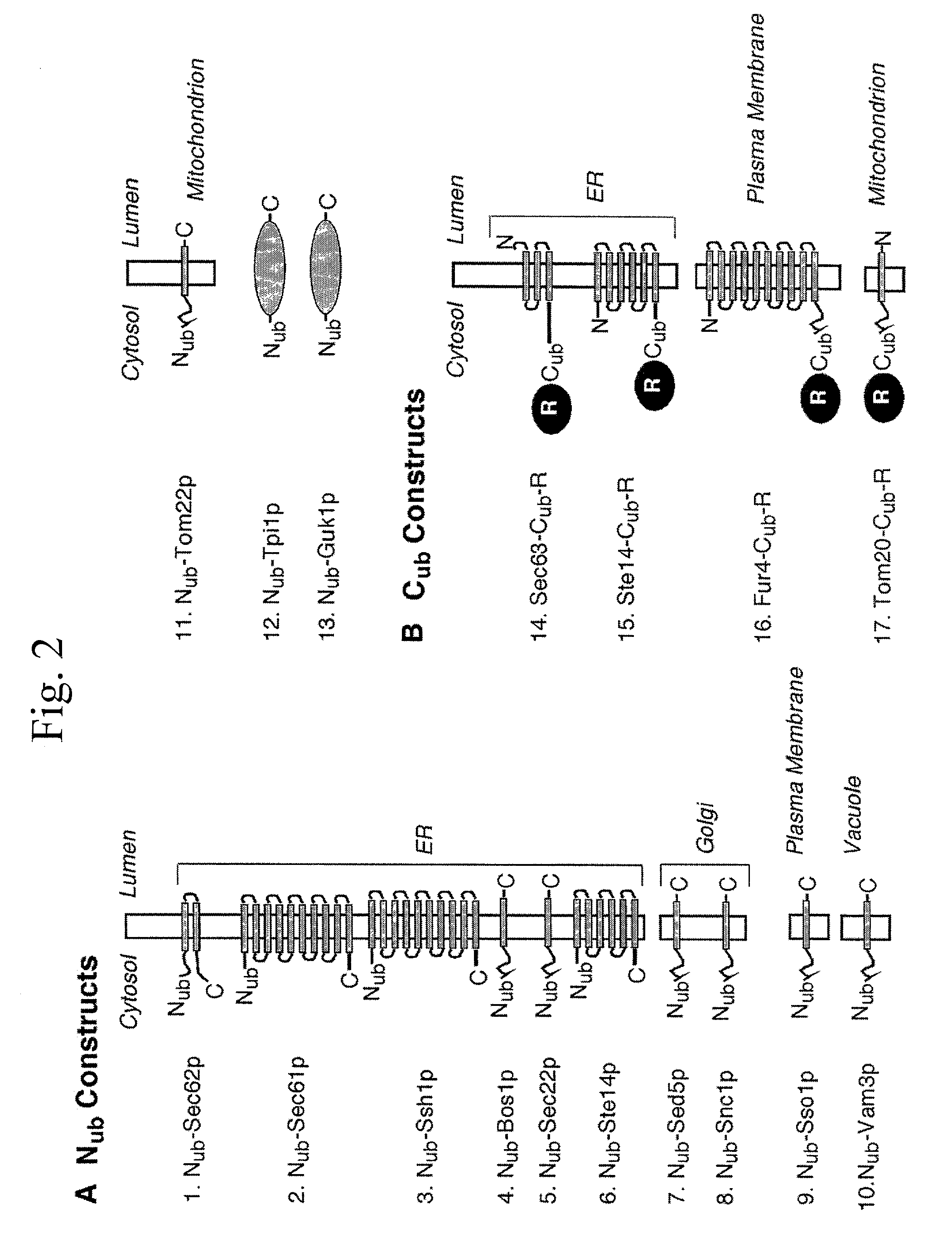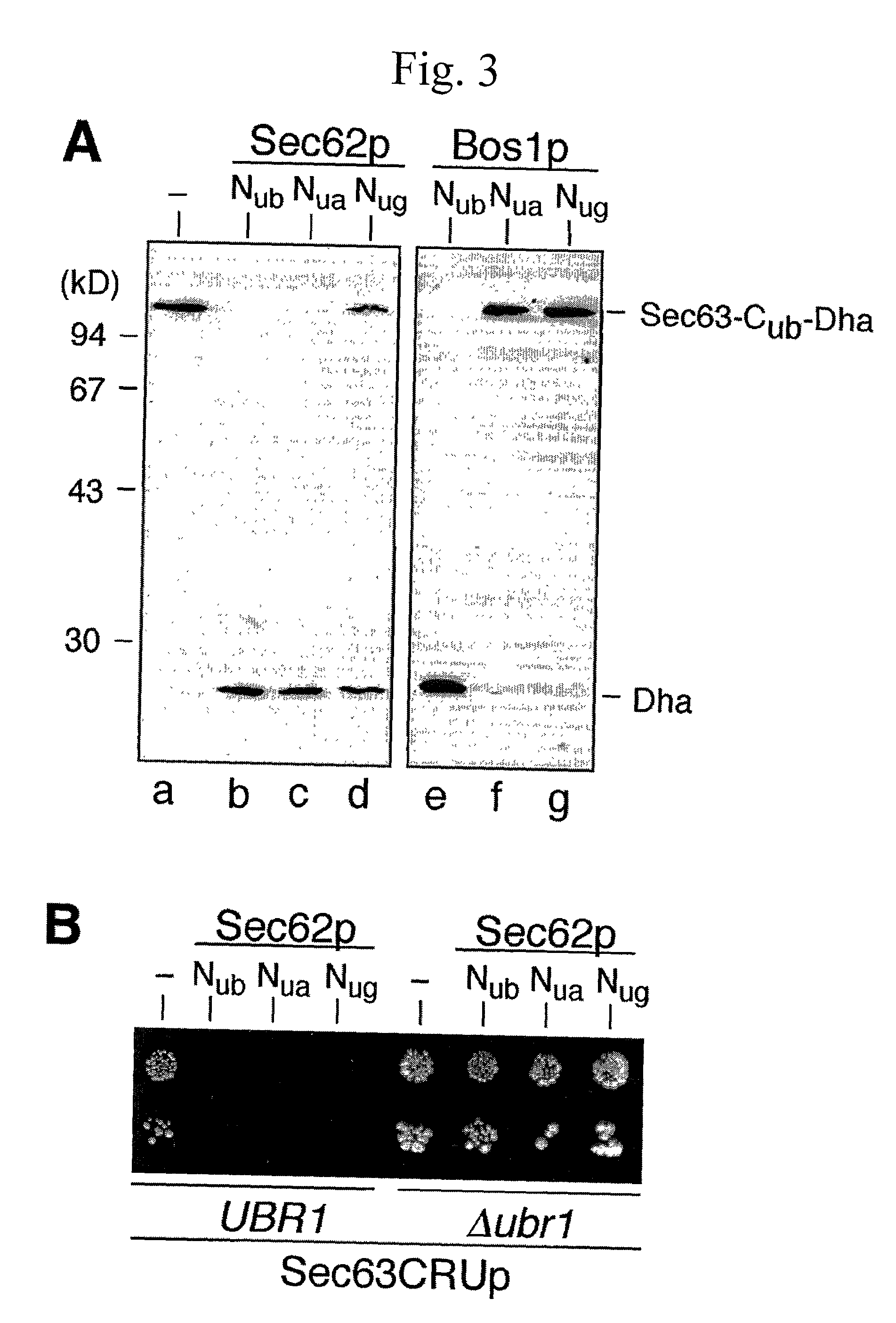Split- ubiquitin based reporter systems and methods of their use
a reporter system and ubiquitin technology, applied in the field of ubiquitin-based reporter systems and methods of their use, can solve the problems of ill-suited study of nuclear two-hybrid assays, unable to detect protein interactions unable to detect protein interactions within or at the surface of cellular membranes, so as to improve cleavage, increase cleavage, and decrease cleavage
- Summary
- Abstract
- Description
- Claims
- Application Information
AI Technical Summary
Benefits of technology
Problems solved by technology
Method used
Image
Examples
example 1
Mapping the Molecular Environment of a Membrane Protein in vivo
[0438] The split-Ubiquitin (split-Ub) technique was used to map the molecular environment of a membrane protein in vivo. Cub, the C-terminal half of Ub, was attached to Sec63p, and Nub, the N-terminal half of Ub, was attached to a selection of differently localized proteins of the yeast Saccharomyces cerevisiae. The efficiency of the Nub and Cub reassembly to the quasi-native Ub reflects the proximity between Sec63-Cub and the Nub-labeled proteins. By using a modified Ura3p as the reporter that is released from Cub, the local concentration between Sec63-Cub-RUra3p and the different Nub-constructs could be translated into the growth rate of yeast cells on media lacking uracil. We show that Sec63p interacts with Sec62p and Sec61p in vivo. Ssh1p is more distant to Sec63p than its close sequence homologue Sec61p. Employing Nub- and Cub-labeled versions of Ste14p, an enzyme of the protein isoprenylation pathway, we conclude t...
example 2
Genetic Screen to Identify Transcriptional Regulator-Interacting Protein
[0527] The Saccharomyces cerevisiae GAL1 promoter is a well-studied example of transcriptional regulation by nutrients. When the cells are grown in medium containing galactose as the sole carbon source, GAL1 is activated by Gal4p, which binds specifically to the GAL1 promoter. Gal4p interacts with the holoenzyme component Srb4p, thereby recruiting the transcription apparatus to the GAL1 promoter. If the carbon source is switched to glucose, the promoter is repressed by two independently operating mechanisms. Gal80p masks the activation domain of DNA-bound Gal4p, thereby preventing the recruitment of the transcription machinery. In addition, the cytosolic repressor Mig1p enters the nucleus. Mig1p blocks transcription by recruiting the general corepressor Tup1p to its two sites in the operator region of the GAL1 promoter. Because the deletion of SRB10, a member of the RNA-PolII holoenzyme, reduces transcriptional ...
PUM
| Property | Measurement | Unit |
|---|---|---|
| Fluorescence | aaaaa | aaaaa |
| Interaction | aaaaa | aaaaa |
| Environmental properties | aaaaa | aaaaa |
Abstract
Description
Claims
Application Information
 Login to View More
Login to View More - R&D
- Intellectual Property
- Life Sciences
- Materials
- Tech Scout
- Unparalleled Data Quality
- Higher Quality Content
- 60% Fewer Hallucinations
Browse by: Latest US Patents, China's latest patents, Technical Efficacy Thesaurus, Application Domain, Technology Topic, Popular Technical Reports.
© 2025 PatSnap. All rights reserved.Legal|Privacy policy|Modern Slavery Act Transparency Statement|Sitemap|About US| Contact US: help@patsnap.com



